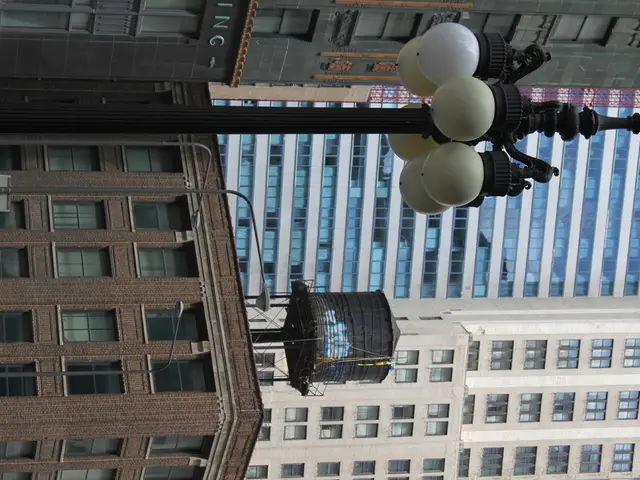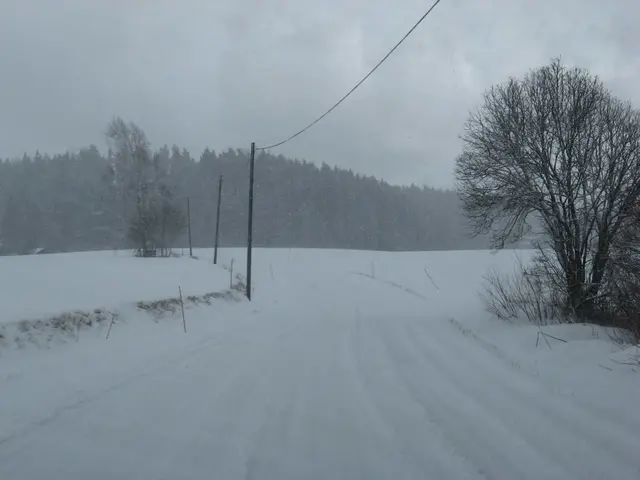Relax and Rejuvenate: The Power of Nature in Combating Stress
Exploration of Natural Imagery Aids in Stress Reduction, Reports Scientific Research
Stressed out? Instead of reaching for a painkiller or another cup of coffee, try a walk in the park or a quick mental escape to a serene nature scene. A study published in the Journal of Environmental Psychology reveals that mental imagery of tranquil, nature-based environments can do wonders for your stress levels, leaving urban landscapes in the dust.
Researchers from the University of Turku surveyed 50 introductory psychology students and asked them to visualize two scenes: one in nature and one in an urban setting. To their delight, they discovered that students experienced reduced heart rates and increased calmness when imagining natural environments. Conversely, urban imagery contributed to higher stress levels and mental fatigue.
Nature and Stress Reduction: Beyond Physical Presence
The study supports two theories: the Stress Reduction Theory (SRT) and the Attention Restoration Theory (ART). According to SRT, nature fosters innately positive emotional responses as a result of our evolutionary conditioning, cultivating an environment of security and relaxation. On the other hand, ART states that urban scenes require intense cognitive effort, leading to mental exhaustion, while natural environments facilitate effortless attention recovery.
Mental imagery of nature isn't just about the picturesque green landscapes. It also extends to other elements such as flowers, bugs, and even certain natural-style patterns. The more connection you have with nature, the more benefits you'll reap from this psychological exercise. In other words, next time you're feeling on edge, take a mental vacay to your favorite nature spot or let your mind wander through a peaceful forest.
So, whether you're landlocked and lack real access to nature or simply need a quick stress-buster, mental imagery of calming, nature-based environments offers an easy, affordable, and accessible stress relief solution. Give it a try the next time you need a break and feel the tension start to melt away.
Enrichment Data:
- Physiological and Psychological Responses
When participants visualized natural environments, they experienced reduced heart rates, increased parasympathetic nervous system activity, and reported feelings of calmness. In contrast, urban imagery resulted in higher levels of stress and mental fatigue.
- Theoretical Frameworks
- Stress Reduction Theory (SRT): Nature triggers evolutionary-based positive emotional responses, reducing sympathetic ("fight-or-flight") activity and promoting safety signals.
- Attention Restoration Theory (ART): Nature supports effortless attention recovery, while urban settings drain cognitive resources through directed attention (e.g., navigating traffic, processing crowds).
- Practical Implications
Mental nature imagery provides a cost-free, accessible tool for stress management, particularly useful in urban settings without immediate access to green spaces. Studies demonstrate that visualizing nature-related elements, such as flowing water, can produce similar restorative effects to physical exposure.
| Aspect | Nature Imagery | Urban Imagery ||-----------------------|------------------------|------------------------|| Heart Rate | Slows[1][2] | No significant change || Nervous System | Parasympathetic boost[1]| Sympathetic activation || Mental Fatigue | Reduced[2] | Increased[2] || Cognitive Demand | Low (effortless focus) | High (directed focus) |
This dual theoretical and empirical evidence underlines nature imagery’s superiority in addressing stress and restoring cognitive resources.
- Incorporating nature in our mental escape can help combat stress, as revealed by a study published in Journal of Environmental Psychology.
- Imagery of serene natural environments resulted in reduced heart rates and increased feelings of calmness in test subjects.
- On the contrary, urban imagery contributed to higher stress levels and mental fatigue.
- The study supports the theory that nature promotes relaxed emotional responses due to our evolutionary conditioning (Stress Reduction Theory).
- Nature also offers effortless attention recovery, giving rest to cognitive resources (Attention Restoration Theory).
- Mental imagery of nature extends beyond picturesque landscapes, encompassing elements like flowers, bugs, and natural patterns.
- In the future, taking a mental stroll through a peaceful forest or visualizing your favorite nature spot could serve as a quick stress-buster, especially when real access to nature is limited.
- In conclusion, mental imagery of calming, nature-based environments offers a cost-free, convenient, and effective solution for improving health, emotional well-being, and lifestyle, aligning with the trends of sustainable living and mental health in 2022, discussed in publications such as realsimple, health-and-wellness, lifestyle, home-and-garden, and science journals.








